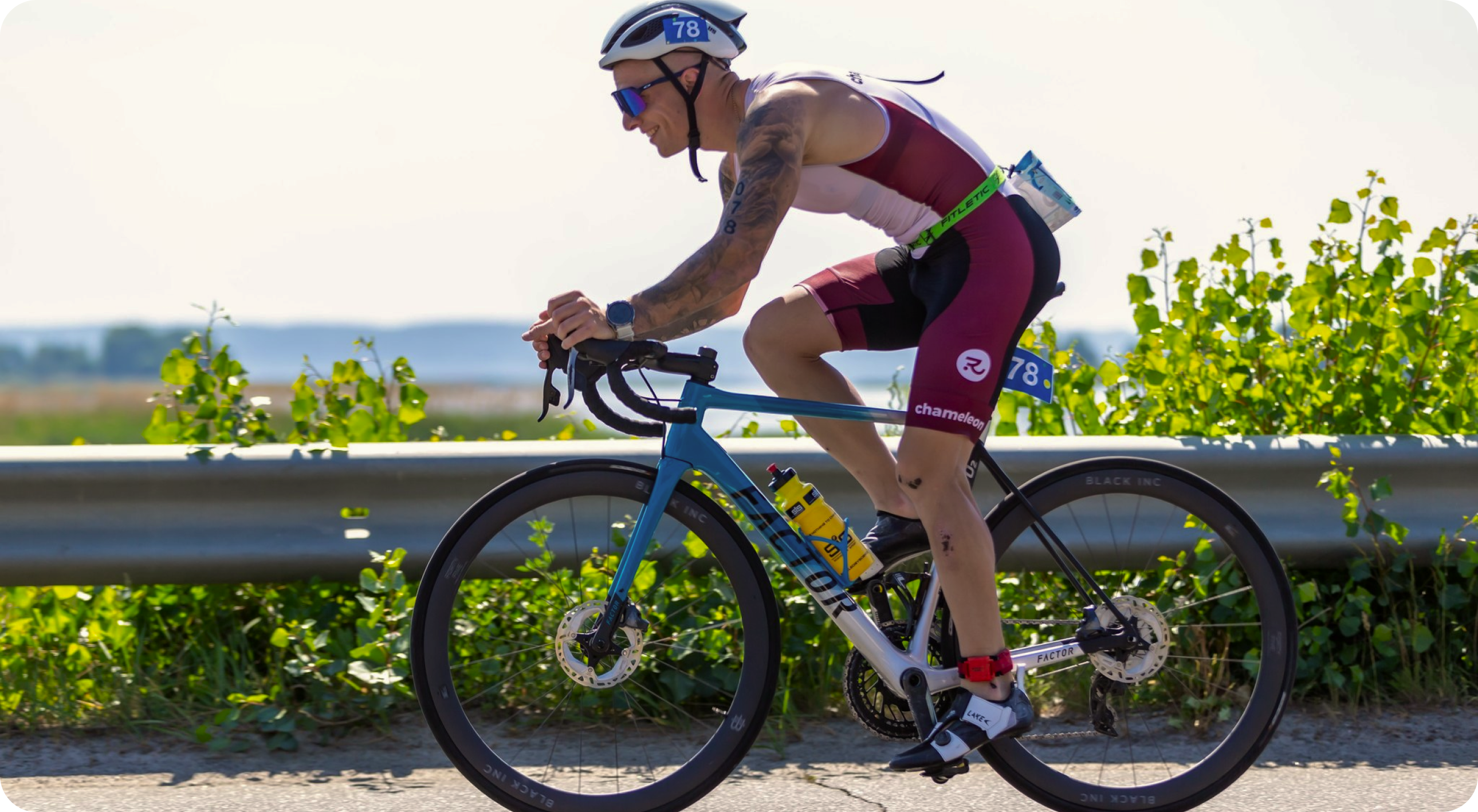Participating in your first triathlon can be an exciting and fulfilling experience, but it’s essential to manage costs effectively to ensure you can enjoy the event without spending all your money.
In this guide, we will share some tips and tricks on how you can save money when preparing for your first race.
Answering How Much is A Triathlon? Question
Embarking on your first triathlon journey doesn’t have to break the bank.
Learn how to budget wisely for triathlon training, gear, and race price with our comprehensive guide.
Before planning how you’ll cross that finish line or enroll in your first Ironman, it’s crucial to understand the potential costs involved.
Triathlon expenses can be categorized into three main areas: sport gear, training, and race-related costs.
Each of these categories involves numerous elements, and the total can add up quickly, especially for beginners.
How Much Does it Cost to Buy a Triathlon Gear?
The cost of participating in a triathlon can vary based on several factors, including the quality of gear, race entry fees, and ongoing expenses.
Let’s break it down starting with the gear.
1. Swim Gear
The swim segment of a triathlon requires some specific gear.
At a minimum, you’ll need a swimsuit and goggles.
Competitive swimmers often choose goggles with anti-fog and UV protection features for optimal visibility in various conditions.
Swimsuits designed for competitive swimming are usually made from chlorine-resistant materials to ensure durability.
For example, a good pair of goggles can cost between $10 and $50, while swimsuits can range from $20 to $200 depending on the brand and material.
For an open-water swim, you might need a wetsuit.
The purpose of the wetsuit is to increase buoyancy and reduce drag, allowing swimmers to conserve energy.
They also provide insulation in colder water temperatures.
Wetsuits can range anywhere from $100 to over $500, depending on the brand, material, and thickness.
2. Biking Gear
The cycling segment is often the most gear-intensive and, therefore, the most expensive.
A reliable road bike is essential.
Bike costs can vary dramatically, from a few hundred dollars in your local bike shop to several thousand for advanced racing bikes.
Other necessary cycling equipment includes a helmet (mandatory in most races), cycling shoes, and pedals.
Padded cycling shorts and jerseys are also recommended for comfort during long rides.
It’s worth noting that bike maintenance is an ongoing cost to consider.
Regular tune-ups, replacement of worn-out parts, tire replacements, and potential repairs all add to the total cost of bike ownership.
3. Run Gear
Running gear is the least costly compared to how much you spend on swimming and cycling fits.
The main investment here is a good pair of running shoes, which can range from $50 to $150 for most mainstream brands.
Technical socks can help prevent blisters, and moisture-wicking clothing can keep you comfortable during your runs.
To save on gear, consider purchasing used gear, particularly for the more expensive items like the bike.
Many athletes upgrade their equipment frequently, meaning that items are often used in excellent condition and available for a fraction of the cost of new gear.
Check out our gear marketplace to find the perfect tri suit for your future races.
Training Costs
Training for triathlon events can involve various costs, but it’s possible to manage them effectively.
Here are some considerations for managing training costs:
1. Coaching
Coaching is a significant cost to consider.
A professional coach can provide a tailored training plan, advice on technique, and strategies for race day.
Costs for triathlon coaches vary widely, from around $100 per month for online coaching services to $500 or more for personalized, one-on-one coaching.
If this is too steep, consider self-coaching using the multitude of free or low-cost resources available online.
There are also many useful books that every triathlete should read.
2. Club Memberships and Facilities
To train effectively, you may need access to certain facilities.
Gym membership, which provides access to strength training equipment and often indoor pools, varies by location and level of luxury, but expect to pay around $30-$100 per month.
If swimming in open water isn’t an option, a pool membership will be necessary to work on those swim laps.
3. Nutrition
Proper nutrition is an integral part of triathlon training.
This includes daily meals, pre-workout, and post-workout nutrition, as well as nutrition during workouts for longer sessions.
A well-balanced diet tailored to support your training load can increase your performance and aid in recovery.
Depending on your existing diet, this may increase your regular grocery bill.
Spending money on supplements, sports drinks, and energy gels should also be considered.
Race Fees and Travel
Whether it is a sprint race, or a full Ironman, race fees and travel expenses are significant considerations when budgeting for a triathlon.
1. Race Registration Fees
Race entry fees vary significantly depending on the race distance, location, and organizer.
A local sprint triathlon might cost as little as $50, while a full Ironman race can cost up to $750 or more.
It’s also worth noting that popular races can sell out quickly, so early registration is recommended not only to secure a spot but also to take advantage of early bird pricing, if available.
2. Travel and Accommodation
Unless you’re lucky enough to live near a triathlon venue, travel costs will need to be factored into your budget.
This could include fuel for driving to the event or potentially even flights for more distant races.
Accommodation costs will also be a factor for multi-day events or races that are far from home.
Consider your rent affordability to find a suitable property.
You may also want to think about the cost of meals while traveling.
Choosing local races, carpooling, and sharing accommodation with fellow racers are all good strategies to reduce these costs.

Other Spendings to Consider
Race Day Nutrition and Hydration
On race day, you will need to have a nutrition and hydration plan.
This will likely involve energy gels, bars, chews, sports drinks, or electrolyte tablets.
These are additional costs that can add up, particularly as you will likely want to test your race-day nutrition strategy during your training.

Maintenance and Replacement Costs
All sports equipment wears down over time and will eventually need to be replaced.
Running shoes, for instance, should be replaced every 300-500 miles.
Bike tires also wear down and should be replaced when you start to see signs of wear or cracking.
Conclusion
While triathlon can be an expensive sport, it doesn’t have to be prohibitive.
There are many ways to save money and still have a fantastic triathlon experience.
Buying used gear, choosing budget-friendly races, optimizing nutrition costs, and sharing expenses with fellow athletes are just a few strategies that can help you manage the cost of your first ironman or other triathlon event.
Remember, the value of a triathlon experience goes far beyond the dollars spent.
The mental and physical health benefits of triathlon, the joy of achieving personal goals, and the thrill of competition are priceless.










